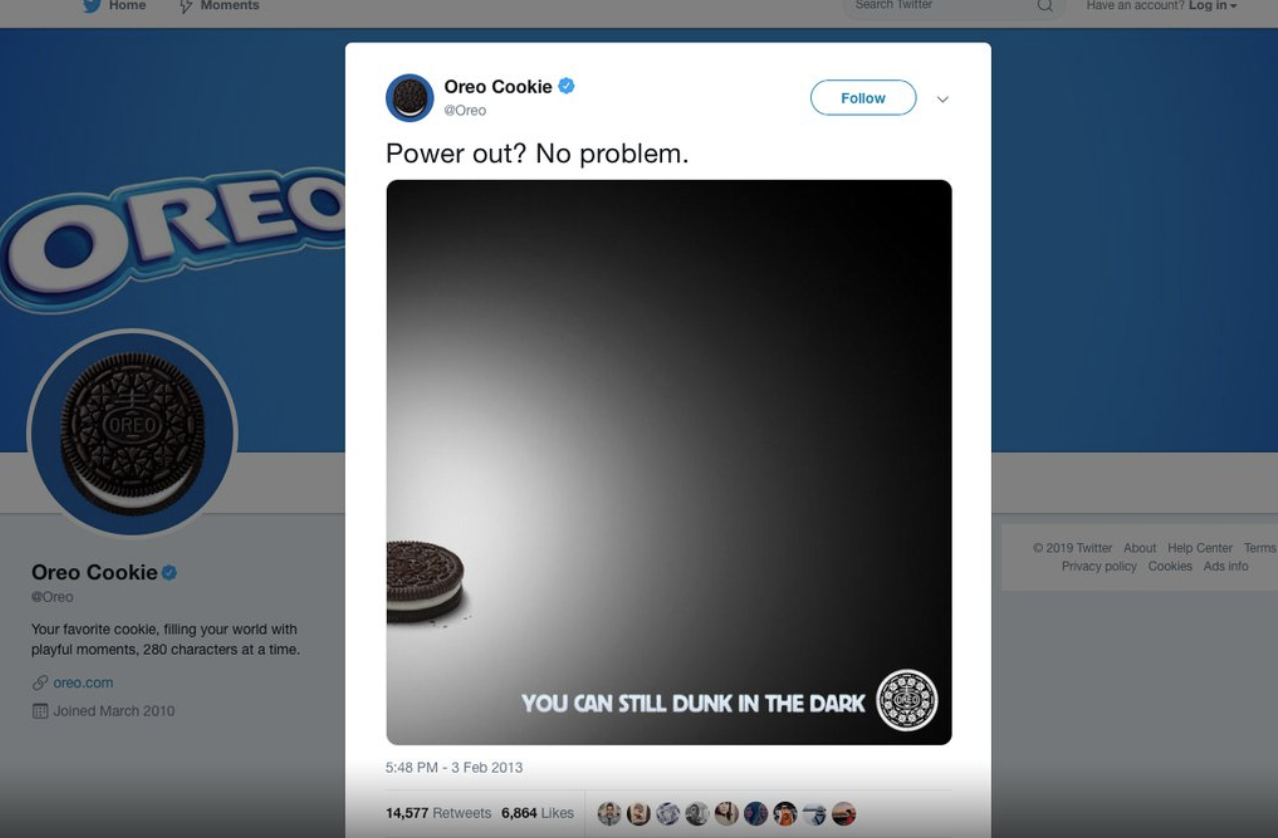By Jose Duarte
When it comes to social, brands often still chase the all-consuming, elusive pursuit of virality. While many people can’t even describe what that means, clients and social media managers spend a lot of time seeking, or asking their agencies to get them the next viral moment that will rival moments like the famous Oreo post that capitalized on the unexpected Super Bowl blackout, and was retweeted thousands of times, capturing the attention of millions of people, and thousands of social media strategists around the world.
In 2019 the social media world is much more fragmented, saturated and noisy. No long can brands spray and pray Facebook posts and hope that one goes viral eventually. It’s OK if that happens but centering your efforts on something as random as virality is a recipe for trouble.
Forward-thinking brands that stop playing the viral lottery and adapt their strategy to the new realities of social will be poised to win in the coming years.
Escaping the viral rat race
Once brands decide to stop playing the viral lottery, the first step they need to take is an overall assessment of how their social strategy fits into their wider marketing ecosystem. Brands should ask themselves important questions including:
Does our brand voice and persona on social fit our wider brand?
Are we using social mostly as a PR channel?
Are we relying solely on organic?
Do we have clear goals and metrics of success on our social platforms?
Do we have a paid media strategy for social?
Social as a full funnel channel
Brands that play the viral lottery tend to limit their use of social media to awareness and customer care activities.
Awareness has been one of the traditional uses for social media, but the decreases in organic reach and engagement are making it harder to break through with organic messages. You should allocate media budget towards awareness activities. The primary goal for this stage should be dual. First to maximize reach, using paid if necessary and then to soften the target audience so they can be retargeted down-funnel later. For those reasons, video should be your primary creative unit: videos are some of the cheapest ads to distribute in social, and in particular, with Facebook and Instagram, they allow you to use their audience building tools that can help drive revenue further down the funnel.
Consideration is in the middle of the funnel and has traditionally been the most neglected on social. The main goal at this stage should be to retarget the awareness audiences with more in-depth posts that showcase more specific benefits of the product or service. Testing is crucial in this phase: Brands should explore different creative formats, proof points, audiences, copy, and any other relevant variables. Social has the unique ability to quickly scale, distribute and evaluate creative. In just a few days (and a few dollars), brands can have a good sense of what messaging is resonating best with their target audiences.
Conversion is the most crucial step in the process. By this point, brands should have a receptive audience that is more likely to convert thanks to their upper funnel efforts. New prospects should also be easier to find thanks to the testing and data gathered by that creative. The use of technologies like Facebook’s Pixel or Instagram Checkout and continued testing of different creative helps maximize the media spend.
Loyalty and advocacy have been the bread and butter of social media since its inception. However, one of the more intriguing trends for 2019 is the emergence of private groups run by brands for their biggest fans: they turn converters into loyal advocates by offering exclusive access to discounts, sales, and content.
A final word
Having one of my posts unexpectedly go viral was exciting to watch when I ran big social media accounts. However, those moments seldom translated into revenue, and the business value was ephemeral and hard to measure. Brands that treat social as a full channel can avoid those pitfalls, and see their efforts translate directly into sales, engagement, and every once in a while, virality.
Jose Duarte is a marketing science lead at Critical Mass, a digital agency.
This article is published in collaboration with Adage.com






